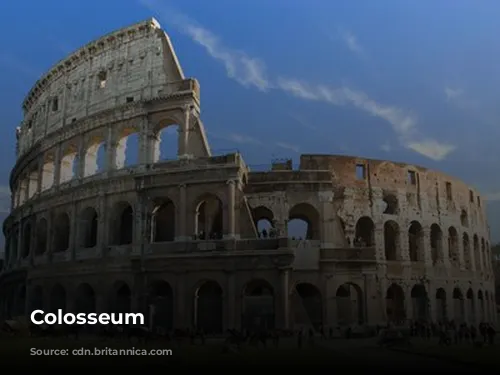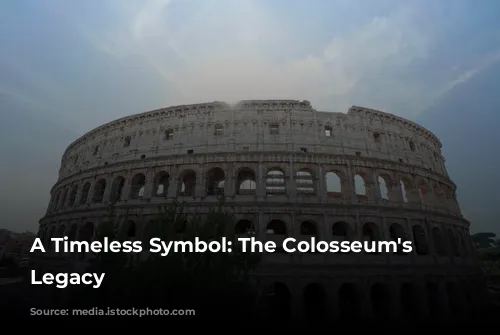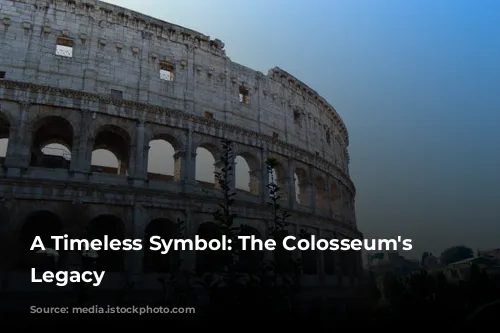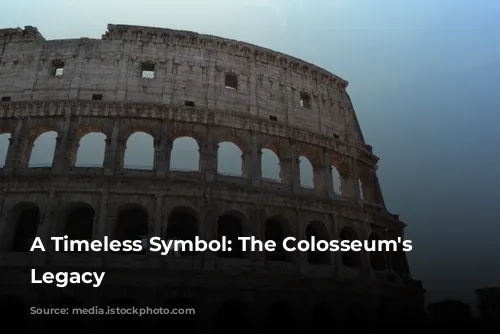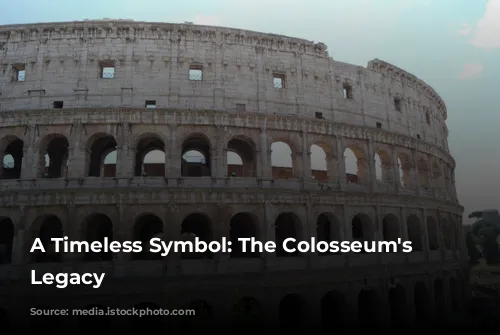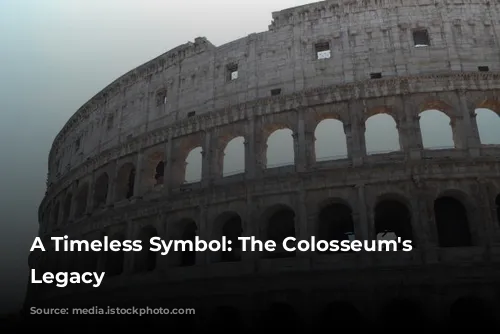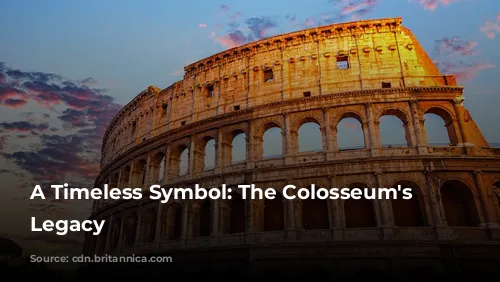Imagine standing before an ancient structure that has witnessed centuries of history, a testament to the ingenuity of a lost civilization. The Colosseum, an iconic symbol of ancient Rome, embodies this very essence. Its grandeur, preserved despite the passage of time, continues to captivate visitors from around the globe.
A Monument to Roman Grandeur
The Colosseum stands as a remarkable example of Roman architectural and engineering prowess. This colossal amphitheater, one of the few structures from the Roman Empire still relatively intact, remains a powerful reminder of the empire’s past. Its historical significance extends beyond its architectural brilliance; it’s a major tourist attraction, drawing millions of visitors each year. In 2018 alone, the Colosseum, along with the Roman Forum and Palatine Hill, generated a staggering $63.3 million (€53.8 million) in revenue, solidifying its position as Italy’s top tourist draw.
From Arena to Fortress to Quarry
The Colosseum’s journey through time is as fascinating as its construction. Following the fall of the Western Roman Empire, the mighty arena fell into disrepair and neglect. The 12th century saw the Colosseum repurposed as a fortress by the Frangipane and Annibaldi families, who used its walls for protection. In the late 15th century, Pope Alexander VI authorized the Colosseum’s use as a quarry, a heartbreaking act that further stripped the structure of its grandeur. This period of neglect lasted over a thousand years until restoration efforts were initiated in the 1990s, fueled by state funding.
The Colosseum: A Stage for Entertainment and Power
The Colosseum was born out of a grand imperial ambition to revitalize Rome after a turbulent period. Like other amphitheaters, Emperor Vespasian intended it to be a center for public entertainment, hosting gladiatorial combat, animal hunts, and even mock naval battles. This ambitious project, envisioned to captivate and entertain the masses, was a statement of power and prosperity.
The Colosseum’s Construction: A Tale of Empire and Exploitation
The Colosseum’s construction began under Emperor Vespasian between 70 and 72 CE. The completed structure was dedicated in 80 CE by his son and successor, Titus. A final addition, the Colosseum’s fourth story, was constructed in 82 CE by Emperor Domitian. The arena’s construction was financed using the spoils from Titus’s conquest of Jerusalem in 70 CE, a stark reminder of the empire’s brutality and exploitation. The labor force, tragically, consisted of enslaved Jews from Judea, highlighting the dark undercurrent of oppression that fueled Rome’s grandeur.
A Colossal Structure: Engineering Marvel and Symbol of Entertainment
The Colosseum, also known as the Flavian Amphitheater, is an impressive elliptical structure made of stone, concrete, and tuff. Its towering four stories reach a height of 620 by 513 feet (189 by 156 meters). It had the capacity to hold up to 50,000 spectators, a testament to the Romans’ skill in crowd management and logistics. The Colosseum was most renowned for its gladiatorial combat, a spectacle that captivated the Roman populace.
A Symbol of Power: Vespasian’s Vision
The Colosseum’s location is as significant as its construction. Situated east of the Palatine Hill, it replaced the artificial lake that was the centerpiece of Nero’s Golden House. This decision, a testament to Emperor Vespasian’s power and vision, had symbolic as well as practical significance. By replacing Nero’s opulent private lake with a public amphitheater, Vespasian aimed to embrace the public sphere and foster a sense of community. This decision symbolized the shift from the tyrannical rule of Nero to Vespasian’s focus on public entertainment and community engagement.
Architectural Brilliance: A Masterpiece of Construction
The Colosseum stands out from earlier amphitheaters, which were often carved into hillsides for support. It is a freestanding structure, a testament to Roman ingenuity and engineering prowess. The arena’s massive structure, measuring 620 by 513 feet (189 by 156 meters), is a masterpiece of construction, using a complex system of barrel vaults and groin vaults. Its exterior showcases three stories adorned with arcades, framed by engaged columns in the Doric, Ionic, and Corinthian orders. This rising arrangement of columns became a defining element of Renaissance architecture, highlighting the Colosseum’s enduring influence on later architectural styles. The Colosseum was constructed using a variety of materials: travertine for the structural framework and facade, volcanic tufa for the secondary walls, and concrete for the inner bowl and arcade vaults.
Spectacle and Shelter: The Colosseum’s Features
The Colosseum could accommodate a massive audience, with seating for up to 50,000 spectators. To protect them from the sun’s glare, a retractable awning, known as a velarium, was used. This intricate system, supported by masts extending from corbels built into the Colosseum’s attic story, required the skill of hundreds of Roman sailors to manipulate its rigging. The Colosseum was the scene of various spectacles, including gladiatorial combat, contests between humans and animals, and even elaborate mock naval battles. While the Colosseum’s role in the martyrdom of early Christians is debated, its historical significance as a stage for entertainment and spectacle is undeniable.
From Glory to Neglect: The Colosseum’s Decline and Restoration
The Colosseum’s story is a reminder that even the mightiest structures can face decline. During medieval times, it was used as a church and later as a fortress by powerful Roman families like the Frangipane and the Annibaldi. Earthquakes, lightning strikes, and vandalism further contributed to its decay. Over centuries, the Colosseum was stripped of its marble seats and decorative elements, becoming a source of building materials. This period of neglect lasted for over a thousand years until the 19th century when preservation efforts began. Pius VIII led a notable effort, and a comprehensive restoration project was undertaken in the 1990s.
An Enduring Legacy: The Colosseum Today
Today, the Colosseum stands as a beacon of history, a testament to Rome’s past and a captivating attraction for visitors from across the globe. It receives close to seven million visitors each year, drawn to its awe-inspiring presence and the stories it tells. The Colosseum continues to inspire awe and wonder, not only for its architectural brilliance but also for its enduring role as a symbol of Rome’s power, ambition, and the enduring legacy of its civilization.


